
If you’re looking to explore the wild side of baking, there’s no better style to master than sourdough.
This fizzy, fermented bread has a tang like no other, and you’ll get a different flavor profile depending on where you start it and how long you nurture it.
While many amateur bakers are intimidated by sourdough, the truth is this rewarding bread isn’t difficult to master.
With time and practice, you’ll improve your baking self-sufficiency and never be short on this probiotic-rich baking ingredient.
What is Sourdough?
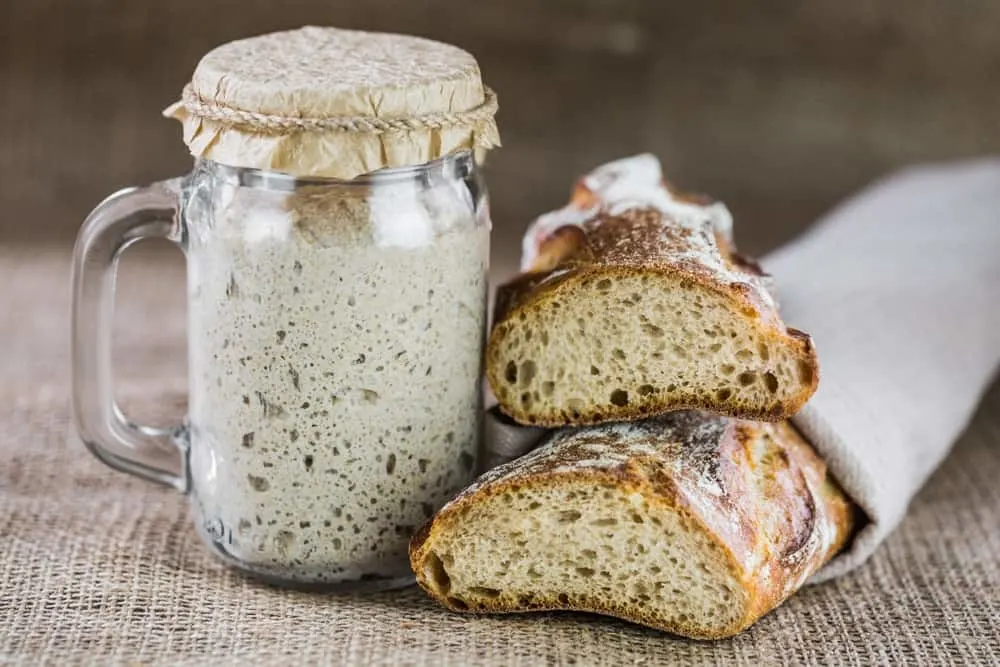
Sourdough, at its simplest, is an extremely basic bread.
All that’s needed is a mixture of flour and water that’s given the time and space to ferment.
Your goal is to capture wild yeast and lactic bacteria from the environment to act as natural leavening agents. As natural enzymes and beneficial bacteria like lactobacillus feast on the flour, they transform its simple sugars into lactic acid that gives the dough its tang.
Part of the appeal of sourdough is that it evolves every time you feed it.
You’ll never use all your starter in a single recipe (unless you choose to) which allows you to nurture the same starter like a pet for months, even years, until it develops a flavor profile distinctive to your batch.
This ancient baking method dates back thousands of years to the first loaves of bread.
In fact, sourdough has historically been the only way to make leavened bread. The ancient Egyptians used wild yeasts to brew their beer, and they relied on them for the sourdough used to feed their workforce four thousand years ago.
Sourdough as we know it today gained traction during the California Gold Rush, as miners brought their coveted pots of starter with them to continue enjoying the taste of their home bread. Today’s now famous San Francisco sourdough bread owes the origins of many of its starters to this era.
While sourdough bread used to be the default, the breadmaking process changed forever in the 1860s when the active ingredients in yeast were isolated and able to be produced on a large scale in the form of baker’s yeast.
This transformed what was once a lengthy, nuanced procedure to leaven each loaf into a quick, industrial process that standardized the taste of bread to how we most think of it today.
Sourdough may have lost its spotlight, but this ancient baking method beats modern bread from both a taste and nutrition perspective, making it a culinary skill well worth mastering.
While it’s possible to begin your sourdough journey with a starter from a friend or even from buying a starter from famous strains, you’ll likely find the process even more rewarding if you learn to cultivate yours from the beginning.
6 Benefits of Sourdough Bread
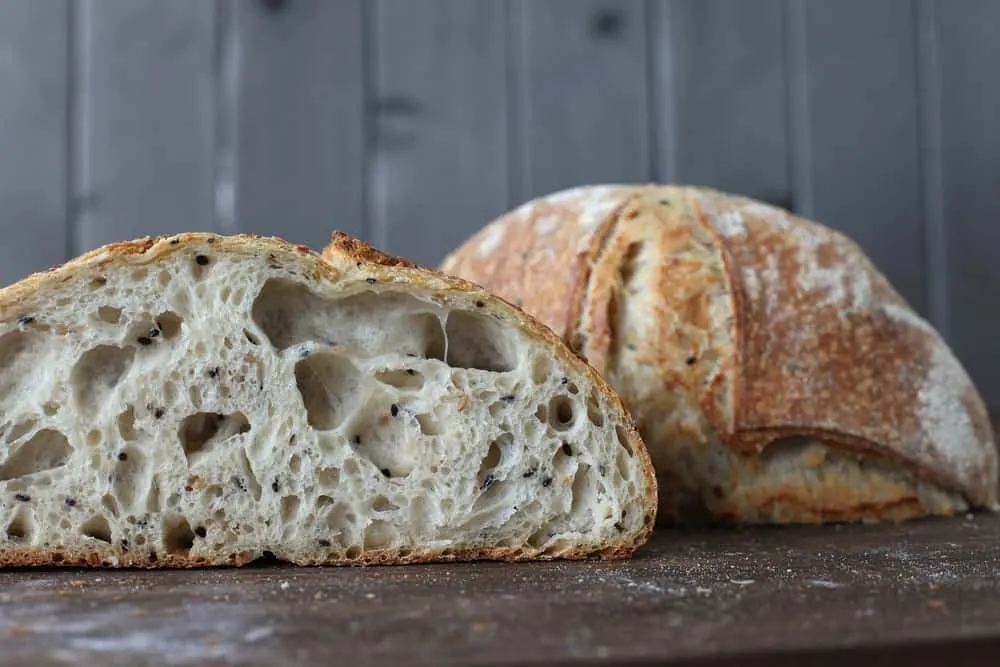
Considering the craze these days to avoid foods that contain gluten, it might seem surprising to suggest that sourdough can be a health food. The truth is that sourdough bread has a lot of benefits that distinguish it from other varieties, which include the following.
1. Low Glycemic Index
Part of bread’s bad reputation comes from how high it ranks on the glycemic index. This is the measure of how quickly your body can convert a substance into glucose once you eat it.
Most bread ranks high on this scale, meaning that eating it will spike your blood sugar and insulin levels in ways that might contribute to diabetes or heart disease.
Sourdough bread stands out because the long fermentation process breaks down these starches, giving it a lower glycemic ranking overall. This makes it a smart choice for those who need to monitor their blood sugar levels.
2. Might Contribute to a Longer Life
Is sourdough the secret to longevity?
That’s a potential conclusion from Dan Buettner’s research on the world’s healthiest people.
He found that one-third of the population on a small Greek island lived past 90 and had a significantly lower risk of lifestyle illnesses like heart disease or dementia.
One possible explanation for their longevity? The islanders ate sourdough bread almost daily.
3. Thicker, Chewier Crust
Crust-lovers, rejoice!
Sourdough bread’s slower rise time, and complex yeast profile tends to give it a thicker, chewier crust. There’s a reason it’s a staple of soup bowls.
4. Better for Gluten Sensitivities
If you suffer stomach problems after eating bread, then sourdough might be easier on your digestive system.
The bacteria within the dough create lactic acid, which helps your body break down gluten and improves its ability to absorb vitamins and minerals as well.
5. Long Shelf Life
According to a 2008 review of sourdough’s properties, the bread contains acetic acid, a naturally occurring vinegar.
This acts as a preservation agent and prevents the loaf from going bad as quickly as standard homemade varieties, and it doesn’t have the potential adverse effects of the preservation agents used in store-bought loaves.
6. Endless Innovation Opportunities
Don’t let sourdough’s simplicity trick you; the bacteria within the bread mean that no two loaves will ever taste the same.
You can also incorporate your starter into a variety of recipes (more ideas later!) to develop that trademark tang.
How to Make a Sourdough Starter
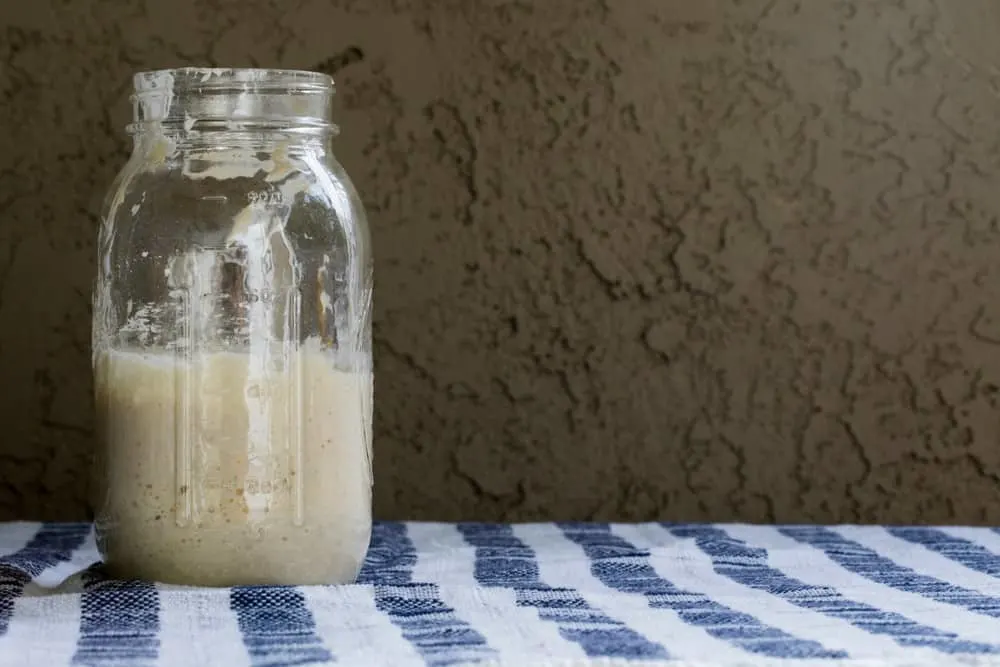
If you need no more convincing that sourdough should be mastered, it’s time to learn how to establish your starter.
While the initial process takes time and patience—and potentially a few restarts to get right—the result is something you can benefit from for years to come.
All that’s needed to begin is water, flour, and a space to collect wild yeast.
Though it’s possible to form a starter with standard yeast, the real magic happens when you turn to wild strains.
Yeast is a microscopic fungus that floats in the air all around us, and it tends to collect around shaded bushes, fruit trees, and sweet-smelling flowers.
You’ll find as many variations on how to make a starter as there are bread recipes, but one method worth experimenting with is the following.
You’ll have better success if you start during a time of the year when the outdoor temperature averages at least 70 degrees F (21 deg C), as wild yeasts aren’t as prevalent in colder weather.
Start by securing a quart-sized mason jar and adding equal parts organic flour and filtered water (usually a quarter cup of each) to the jar.
Cover it with cheesecloth or other breathable cloth and secure in place with a rubber band. Place your starter under a bush or tree, and visit it every day to add another quarter cup of water and flour, ensuring you re-secure the cloth after every addition.
After three to four days, you should start to notice some bubbling on the surface and a yeast scent.
If after five days you still don’t see bubbles or the water has separated from the flour, that’s a sign you haven’t collected enough yeast. In this situation, it’s best to thoroughly rinse out the jar and start over in a new location.
After ten days of daily feedings, your starter should be bubbly with a sour fruit scent.
Bring it indoors, pour into a fresh jar, and store on the counter. You’ll need to continue to feed it a quarter cup of water and flour for another week until it’s robust enough to use.
How To Bake with a Sourdough Starter
At this point, your starter is primed and ready for baking. So long as you keep your starter on the counter and feed it every day or so, it should always be good to go. You’ll get best results if you feed it between three or four hours before you begin your recipe.
There are endless methods for baking with sourdough, so think beyond basic bread to culinary creations like pancakes, pizza crust, soft pretzels, and any other recipe that could use some zip.
It’s also possible to use sourdough with different flour types, including rye and whole wheat.
Below are some recipes for inspiration.
Classic Sourdough by The Perfect Loaf
No-Knead Sourdough by Breadtopia
Sourdough Pizza Crust by King Arthur Flour
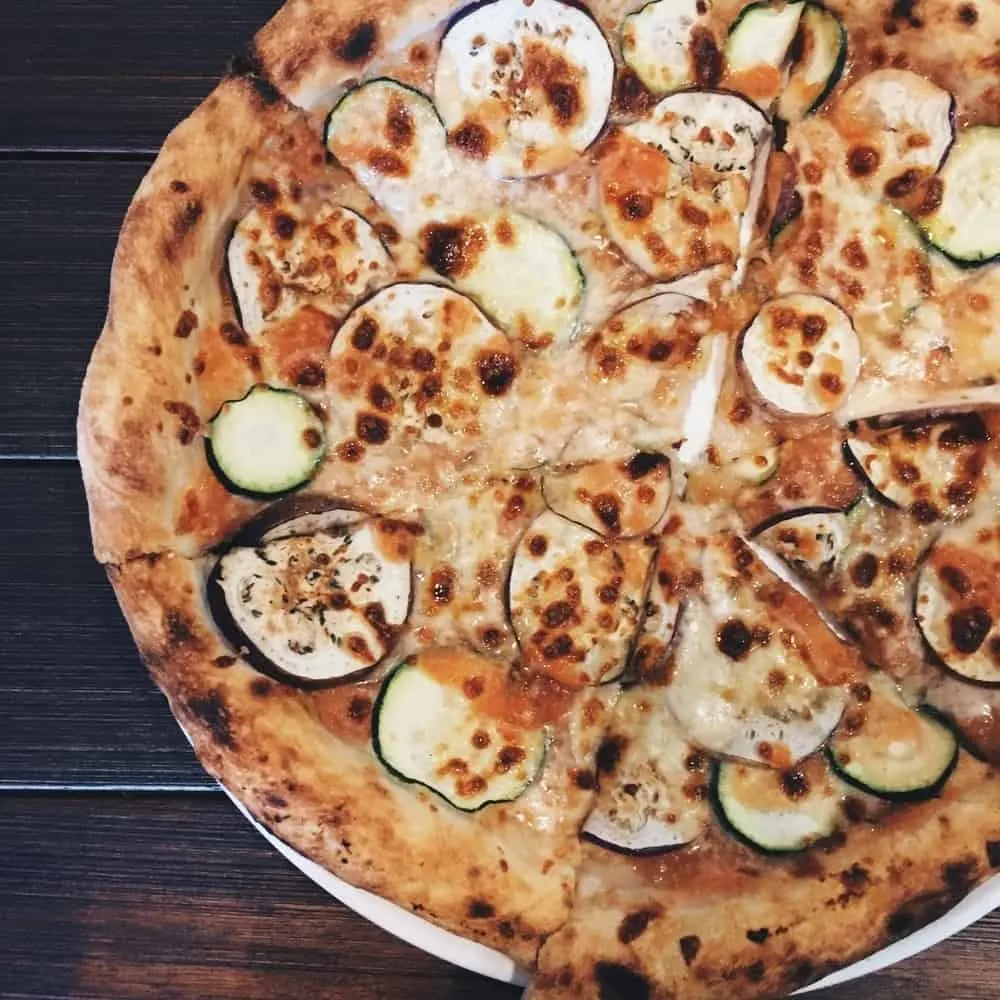
Sourdough Pancakes by Cultures for Health
Sourdough Soft Pretzels by Jennifer Cooks
Artisan Sourdough Rye Bread by Breadtopia
You can also turn to bestselling sourdough cookbooks for recipes, including Sourdough by Sarah Owens and Artisan Sourdough Made Simple by Emilie Raffa.
How To Maintain A Sourdough Starter For Longterm Use
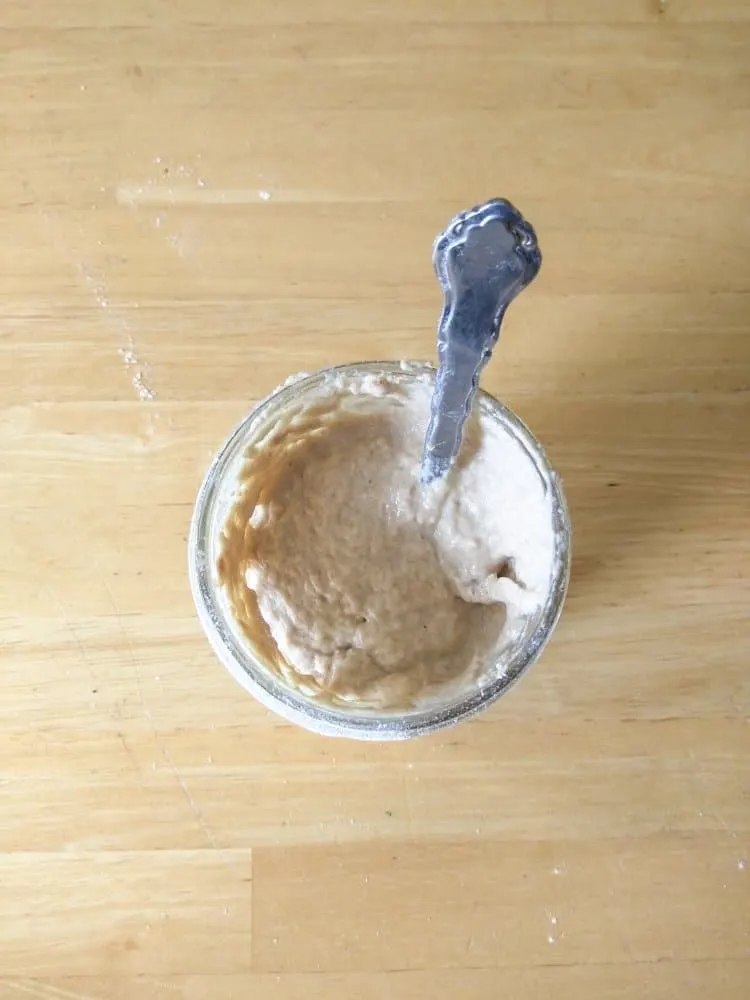
So long as you never use more than half your starter at once, you should be able to keep it alive.
You can feed it every other day if you plan to bake regularly or you can store it in the refrigerator to put it in into dormancy for several weeks at a time.
You’ll need to reactive refrigerated starters before using them by removing it from the fridge a few days in advance and feeding it daily until it becomes sour and bubbly again.
If your starter doesn’t seem to liven up after a few days of feedings, it’s possible that it was in dormancy too long and that you’ll need to start a new batch.
A well-kept sourdough starter can last a lifetime and can’t be beaten when it comes to inspiring you in the kitchen.
Take the time to cultivate a quality starter now, and you’ll enjoy the benefits of homemade bread whenever you want it.
Pin This To Save For Later
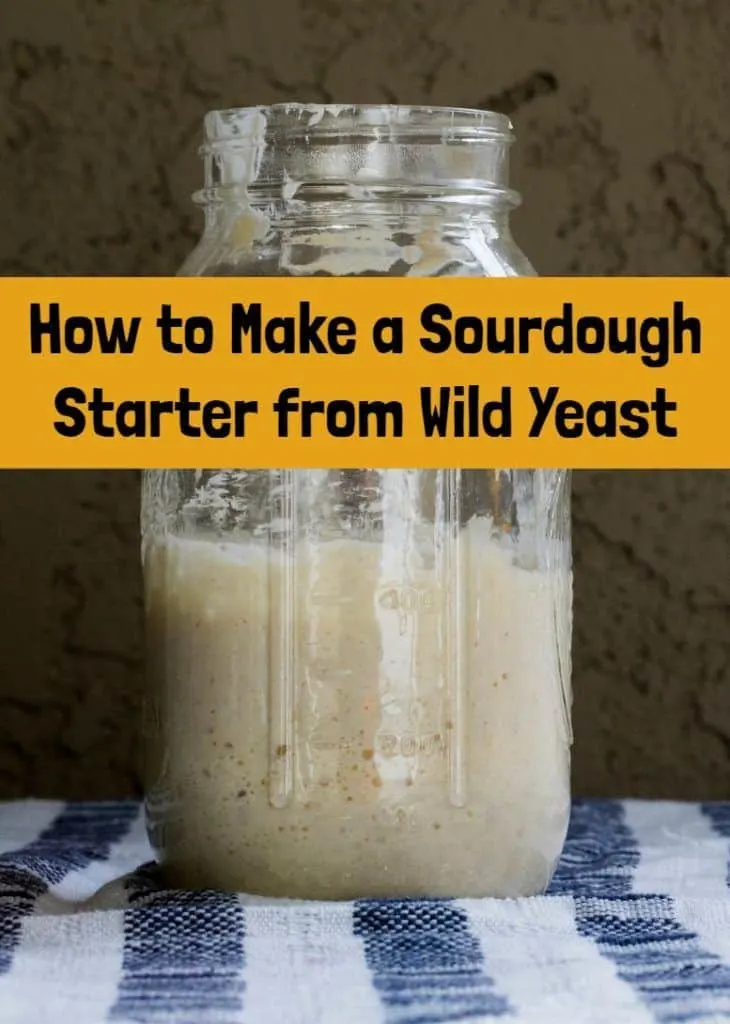

Get the famous Rural Sprout newsletter delivered to your inbox.
Including Sunday musings from our editor, Tracey, as well as “What’s Up Wednesday” our roundup of what’s in season and new article updates and alerts.


